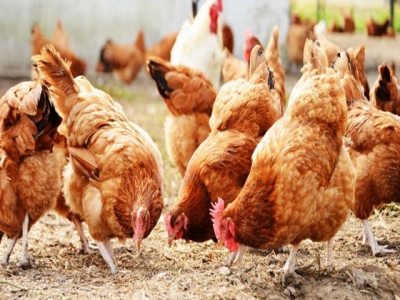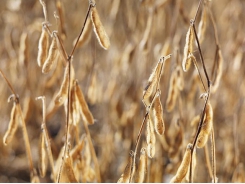Study delves into free-range poultry production

Research findings comparing production systems inconclusive, often contradictory.
Despite a growing separation between the farming community and the general public, today’s consumers are increasingly interested in where the food they eat originates and how it is produced. With regard to food products of animal origin, animal welfare, food quality and sustainability have become key issues of concern to consumers, resulting in increased pressure on farmers to transition from conventionally raised poultry to free-range poultry production, which is perceived as being better for the animals.
A new report released by the Council for Agricultural Science & Technology (CAST), however, has found that while many perceive free-range poultry production systems to be more animal welfare friendly, the research comparing the different production systems is inconclusive and often contradictory.
“As farmers in the United States try to develop new poultry operations that meet consumer demand and continue to make sustainability strides, they often deal with confusing definitions and confounding research related to this field,” CAST noted. As such, a CAST task force, led by co-chairs Jacqueline Jacob and Anthony Pescatore, assessed various aspects of poultry production systems, paying special attention to and clarification of the topic.
This issue paper addresses the challenges by assessing key topics, including animal welfare, food quality, food safety, animal health, biosecurity, productivity and environmental impact.
The authors emphasized that management is key to optimizing animal welfare in any production system.
“Providing an outdoor run can lead to higher space allowances, an increase in the number and types of behavioral and physiological stimulations and the freedom to move between different environments with changes in climatic conditions and bird preferences. Based on these criteria, one can assume that there is an increase in animal welfare,” they said. “It is important to note, however, that there are also increased risk factors that can adversely affect bird welfare. These include increased contact with infectious agents, greater difficulties maintaining hygienic standards, increased possibilities of unbalanced diets and increased threat of predation.”
According to the authors, the main conclusion that can be drawn with regard to the nutritional composition of poultry products is that it is more reflective of what the bird ate rather than the type of production system used.
“Outdoor access itself does not alter the nutritional content of the products. It does appear, however, that the nutrient content of poultry meat and eggs can be enhanced with access to pastures, with the effect depending on the type and quality of the pasture provided,” the report explains.
Food safety is also an important consideration with any production system, the authors said. Salmonella and campylobacter are the main pathogens of concern in poultry production, and the risk for eggs is the transmission of salmonella, specifically Salmonella enteritidis, they explained. Still, research on the bacterial loads on poultry meat from conventional and free-range systems has been conflicting.
“Comparing results between systems is difficult because of differences in geographic location, seasons and detection and isolation methods,” the authors noted. “Regardless of the research conclusions regarding the relative food safety of chickens, consumers should not assume that all free-range chickens are free of salmonella and/or campylobacter.”
The same can be said for conventional production systems, they added, emphasizing, “Proper handling of poultry meat from any production system is essential and should not be overlooked based on the production system used.”
The authors noted that the microbial load on eggshells in both cage systems and free-range nests is comparable from well-managed facilities. Eggs that are laid outside or on the range paddock, on the other hand, have microbial populations that even washing cannot decrease to a safe level.
“The food safety of eggs from the range must also include chemical safety because dioxins, pesticides and lead can be issues with free-range production in some locations,” they said.
According to the authors, there is very little documented research on the disease risks associated with free-range versus conventional poultry production systems.
“It is documented that free-range poultry have more exposure to certain external and internal parasites because of access to invertebrates and wild birds," they said. "Although free-range poultry may be more vulnerable to certain diseases, there is no indication that the presence of free-range poultry poses a risk to conventional poultry.”
As for the environmental impact of different production systems, the authors said the results vary considerably and are often conflicting. The main issues affecting environmental impact are manure management and feed formulation.
The authors pointed out that free-range poultry production requires more land at a time when there is high demand for agricultural land.
“There is considerable variation in farming systems used in free-range poultry production. This includes differences in farm size, housing and range availability and opportunities for pasture rotation. Such differences make it impossible to make general statements with regard to the effect of free-range poultry production on the parameters observed,” they said.
Có thể bạn quan tâm
Phần mềm

Phối trộn thức ăn chăn nuôi

Pha dung dịch thủy canh

Định mức cho tôm ăn

Phối trộn phân bón NPK

Xác định tỷ lệ tôm sống

Chuyển đổi đơn vị phân bón

Xác định công suất sục khí

Chuyển đổi đơn vị tôm

Tính diện tích nhà kính

Tính thể tích ao hồ



 10 slow-growing broiler feeding tips
10 slow-growing broiler feeding tips  Broiler super pre-starters: the clean soy concept
Broiler super pre-starters: the clean soy concept